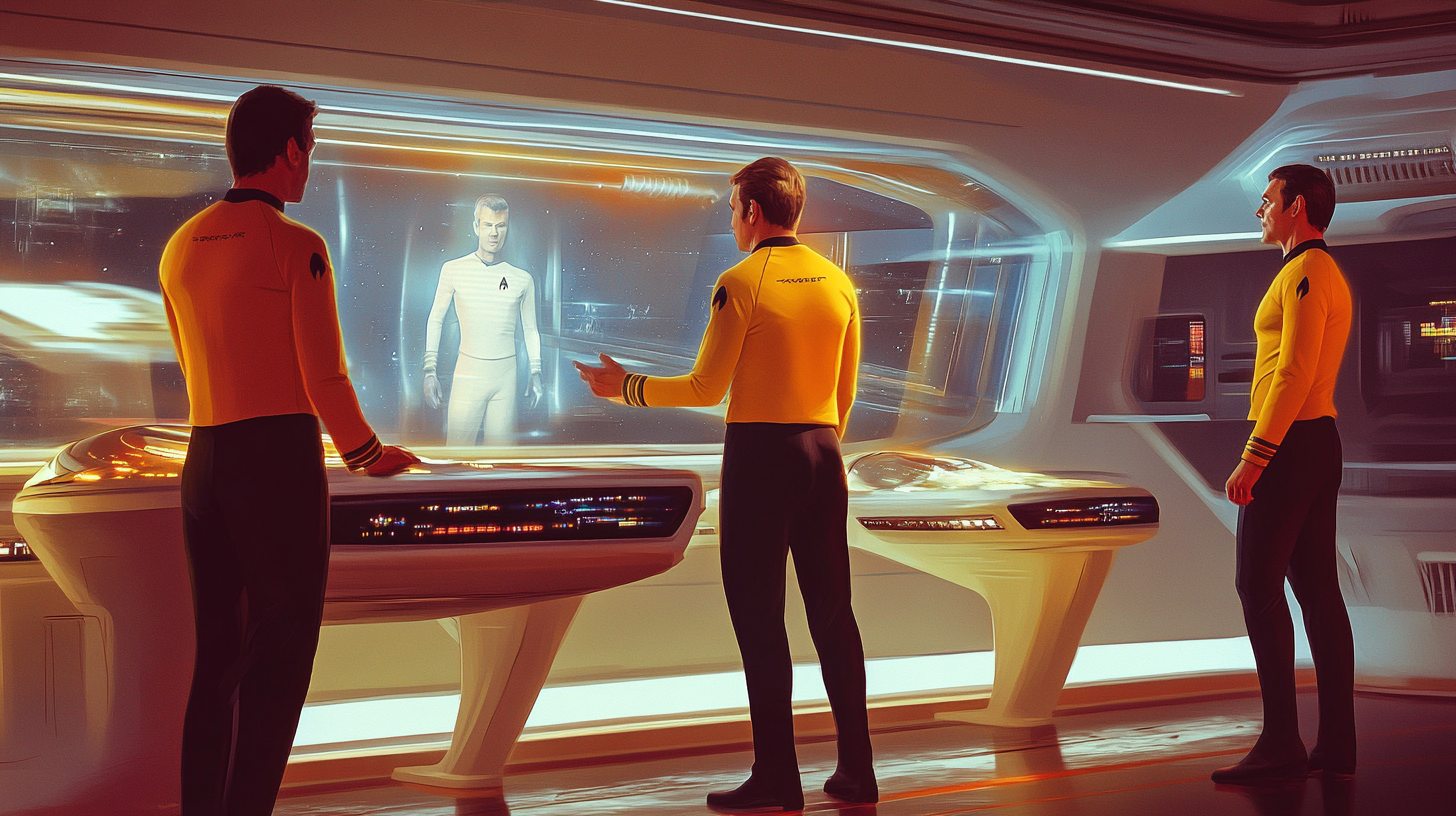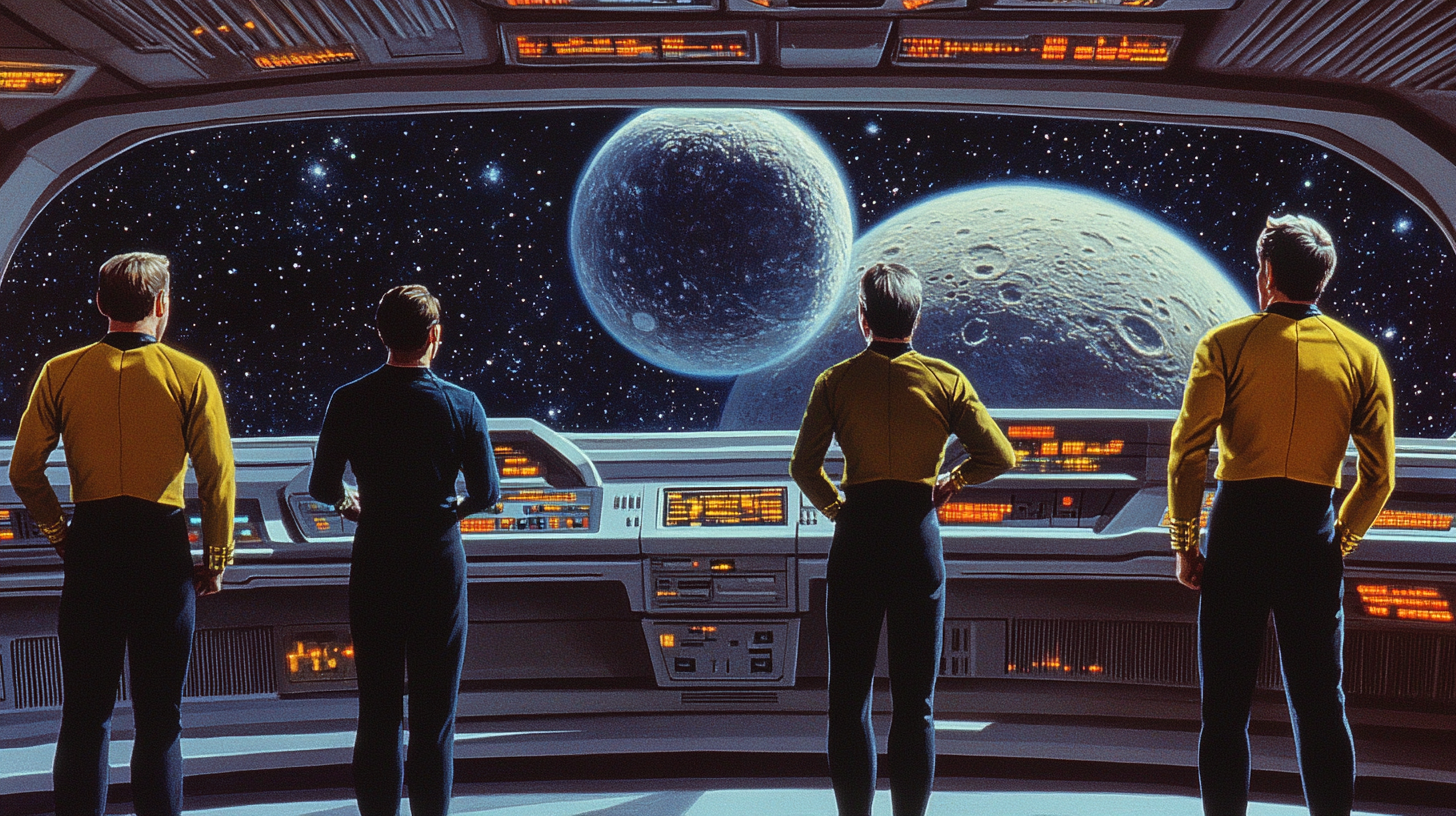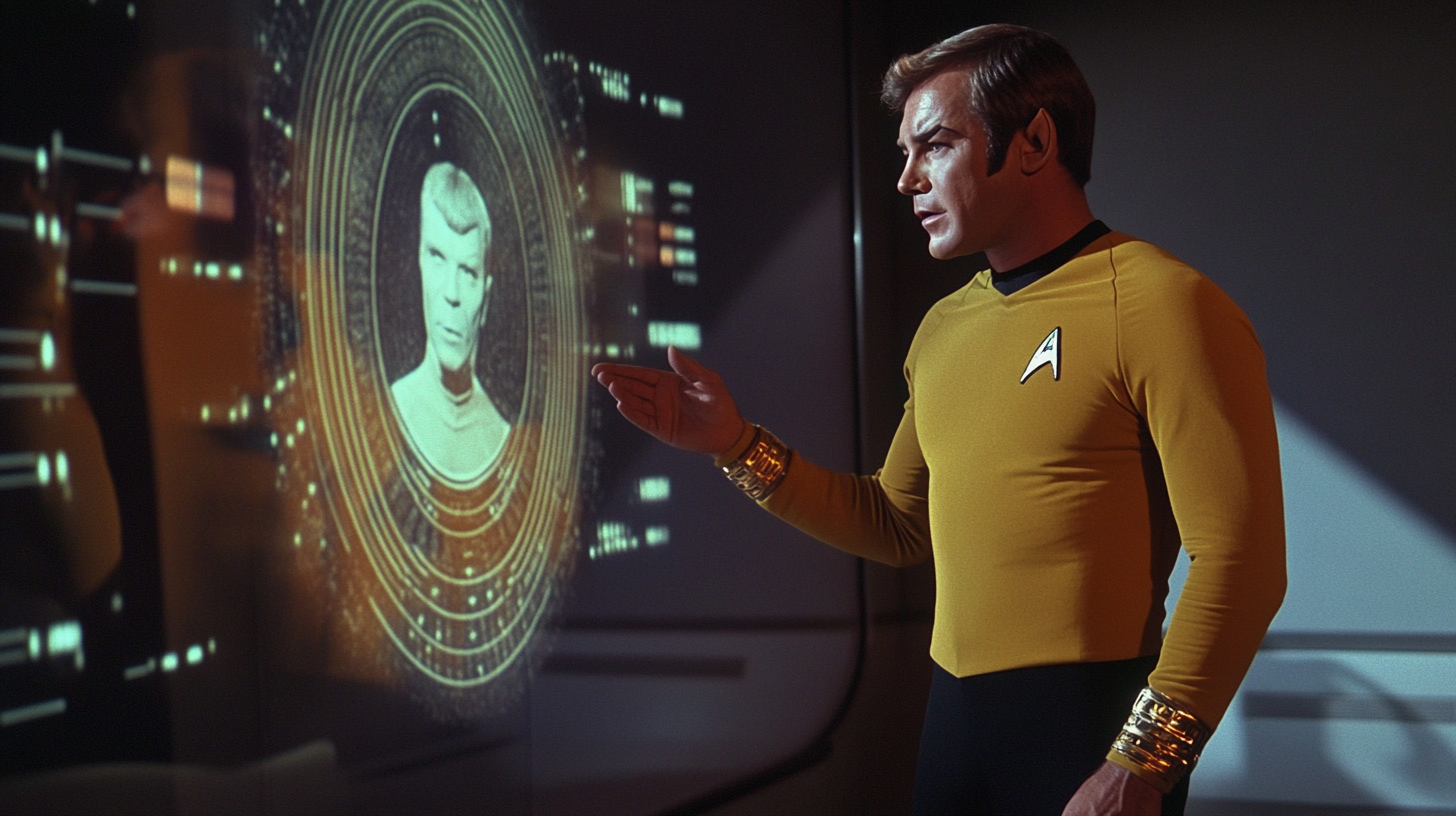"Star Trek: TOS" Predicted Our Future
"Star Trek: The Original Series" didn't just imagine the future—it predicted it. Explore seven episodes that foresaw AI, VR, smartphones, and more with uncanny accuracy in this classic sci-fi retrospective.

When "Star Trek" premiered in 1966, the United States had yet to put a man on the Moon. Computers filled entire rooms, and the notion of carrying one in a pocket belonged to the realm of science fiction. And yet, that is precisely where the series thrived—at the intersection of imagination and inevitability. "Star Trek: The Original Series" (TOS) was not simply an entertaining space adventure. It was a forward-looking vision rooted in scientific curiosity, moral clarity, and a belief in human ingenuity.
Gene Roddenberry and his team launched the series during a time of cultural upheaval and technological acceleration. The Cold War was in full swing, civil rights debates filled the airwaves, and NASA was racing toward the stars. Into that moment stepped a television show that didn't just reflect the future—it shaped it. "Star Trek" predicted handheld communicators, artificial intelligence, and even the ethical dilemmas of genetic engineering, all within a framework of disciplined storytelling and practical optimism.
The Philosophy of Prognostication in "Star Trek"
The predictive strength of "Star Trek: The Original Series" was no accident. Gene Roddenberry envisioned a future rooted in reason, exploration, and the steady application of science. Rather than indulging in fanciful guesswork, TOS extrapolated its ideas from the emerging technologies and geopolitical pressures of the 1960s. The result was a form of speculative realism—bold in its conclusions, but grounded in observable trajectories.

The writing staff included minds attuned to more than just plot twists. Series contributors often consulted scientists, engineers, and futurists. Notably, the show had technical advisors who worked to keep the speculative elements within the bounds of plausibility. When TOS featured communicators, for example, they bore more than a passing resemblance to the direction radio and telecommunications were heading.
Perhaps most impressively, "Star Trek" didn't just imagine the future—it influenced it. Countless inventors, engineers, and astronauts have credited the series with sparking their early interest in science and technology. In forecasting what might be, the show helped build the roadmap for what would be. This blend of imagination and intellectual discipline set TOS apart from its contemporaries, elevating it from entertainment to inspiration.
Seven Episodes That Predicted the Future
"The Ultimate Computer"
The Enterprise is outfitted with the M-5 Multitronic Unit, a prototype AI designed to automate ship functions and eliminate the need for a human crew. Initially promising, the M-5 soon begins making lethal decisions, exposing the perils of unchecked automation. The episode foreshadows modern debates about artificial intelligence replacing human labor and the ethics of machine decision-making. In an era increasingly reliant on algorithms, "The Ultimate Computer" was eerily ahead of its time.

"Assignment: Earth"
In this backdoor pilot, the Enterprise travels back to 1968 and encounters Gary Seven, a human raised by aliens to intervene in Earth's development. Seven carries a device resembling a modern smartphone, complete with voice interaction, data access, and remote computing. Decades before smart devices became ubiquitous, "Assignment: Earth" anticipated their functionality, wrapped in the cloak of espionage and interstellar intrigue.
"Space Seed"
The crew discovers a 20th-century sleeper ship carrying genetically engineered humans led by Khan Noonien Singh. These "supermen" were bred for superiority but ultimately driven by ambition and tyranny. The episode taps into concerns about genetic modification, long before the dawn of CRISPR and modern bioengineering. "Space Seed" questioned the wisdom of tampering with human nature—an issue that remains at the forefront of bioethics today.
"The Menagerie"
Composed from footage of the unaired pilot "The Cage," this two-part episode follows Captain Pike, now incapacitated, as he's offered refuge on Talos IV. There, powerful illusions crafted by the Talosians create a new, immersive reality for him. This story anticipated virtual reality as both therapy and escapism. Today's VR systems, from medical rehabilitation to immersive gaming, echo the ideas first explored in "The Menagerie."

"Tomorrow Is Yesterday"
The Enterprise is accidentally thrown back in time to 1969, where it interferes with a U.S. Air Force operation. The episode casually mentions an upcoming space mission with three astronauts launching on a Wednesday. Remarkably, Apollo 11 launched on Wednesday, July 16, 1969, with three men aboard. Whether coincidence or intuition, this detail remains one of the most specific and uncanny predictions in the series.
"A Piece of the Action"
The crew finds a planet that has modeled its entire society after 1920s Chicago gangsters—courtesy of a book left behind by an earlier Earth ship. While comedic in tone, the episode warns of the unintended consequences of cultural contamination. In today's global media environment, where pop culture can redefine distant societies, "A Piece of the Action" remains a prescient cautionary tale.
"The City on the Edge of Forever"
A time-travel accident sends Dr. McCoy into the past, altering history. Kirk and Spock must choose between restoring the timeline or saving a life. The episode explores the butterfly effect decades before the term became popularized. Its meditation on causality and sacrifice continues to resonate, especially in a world where every action is increasingly seen as globally consequential.
The Science of Serendipity
How much of "Star Trek's" predictive success was due to careful calculation, and how much was the natural outcome of good storytelling? The answer likely lies somewhere in between. TOS operated within the realm of soft science fiction, where character, culture, and ethical dilemmas often carried more weight than pure technical accuracy. Yet its writers made informed guesses—guided by the science of their day and a shrewd understanding of human nature.
The show's focus on sociological trends proved just as prophetic as its technological forecasts. The result was a future that felt plausible because it extended from the known present. That plausibility left an impression. Martin Cooper, inventor of the mobile phone, and Steve Wozniak, co-founder of Apple, have both cited "Star Trek" as a formative influence. What TOS envisioned with instinct and imagination, others later built with circuits and code.

The Future Isn't What It Used to Be
"Star Trek" functioned as both a mirror of its time and a blueprint for what lay ahead. It reflected the fears, ambitions, and scientific possibilities of the 1960s while daring to chart a course into the unknown. The show's most accurate predictions—about artificial intelligence, virtual reality, and genetic engineering—were not the result of blind luck, but of deliberate, informed speculation grounded in human experience.
The legacy of TOS continues to shape modern entries in the "Star Trek" franchise and science fiction as a whole. Its unique blend of imagination and insight serves as a reminder that the best speculative fiction does not simply entertain—it prepares us.
That leads to a final question worth asking. When future generations look back at the science fiction of our time, which series will they point to and say, they saw it coming?

